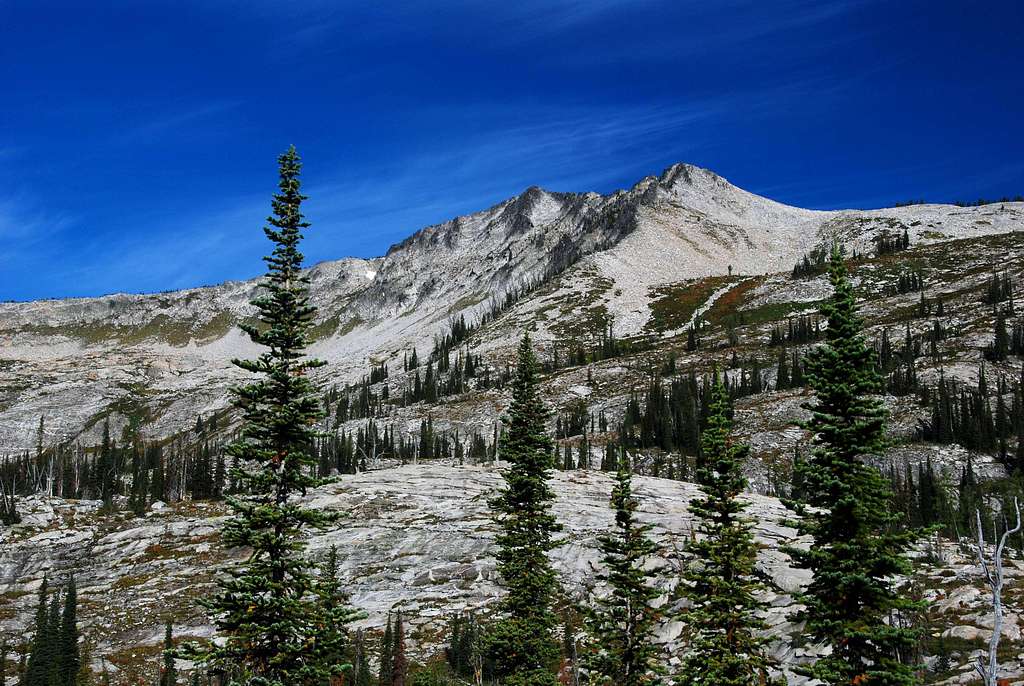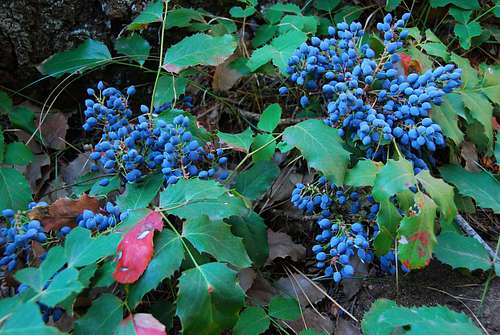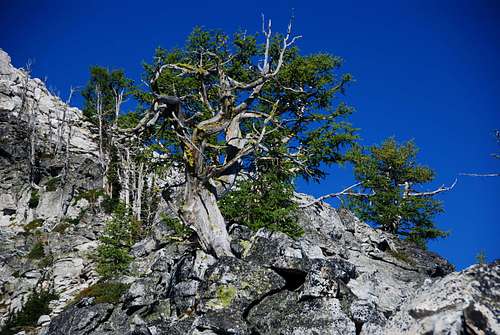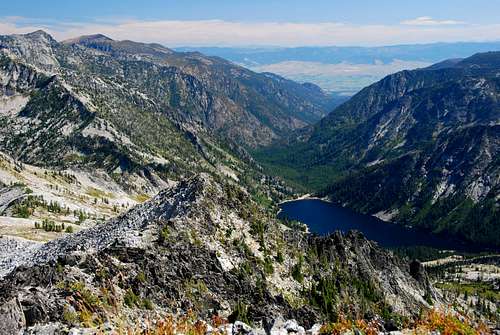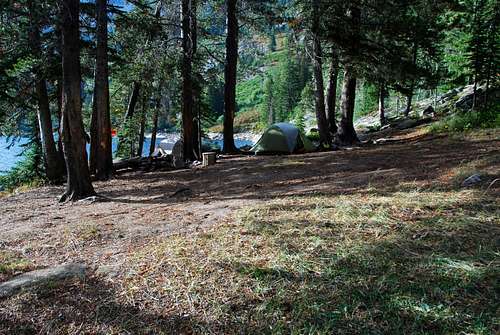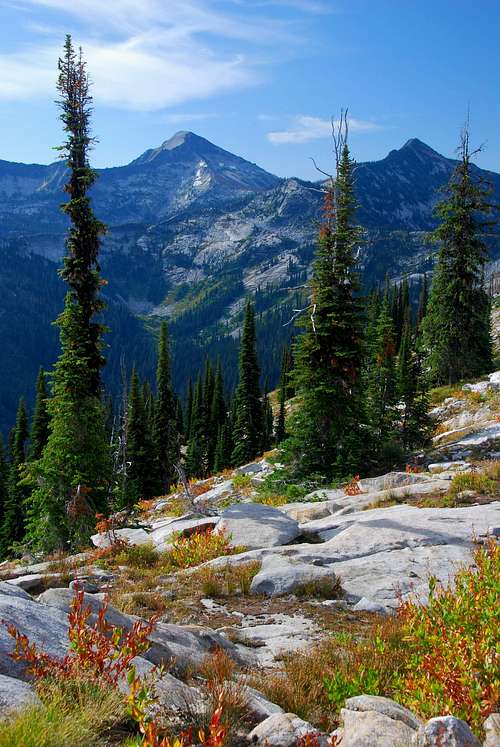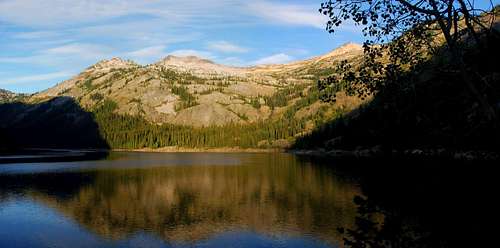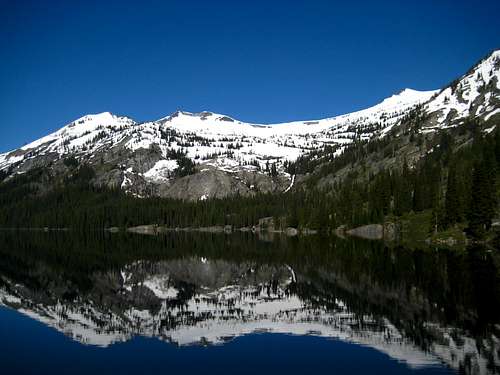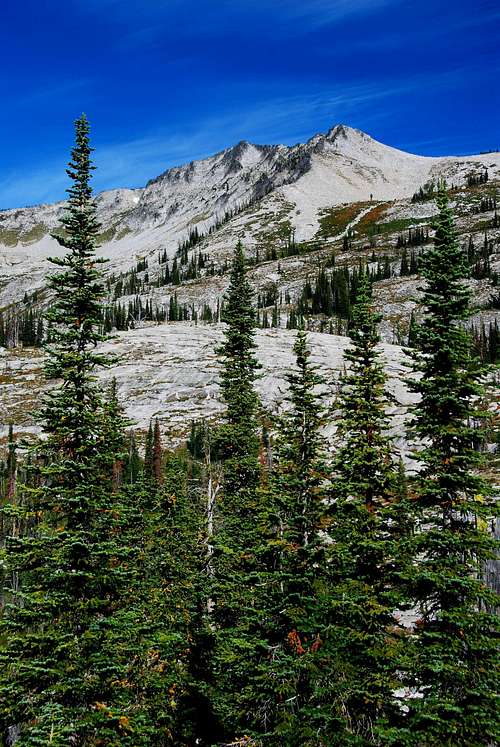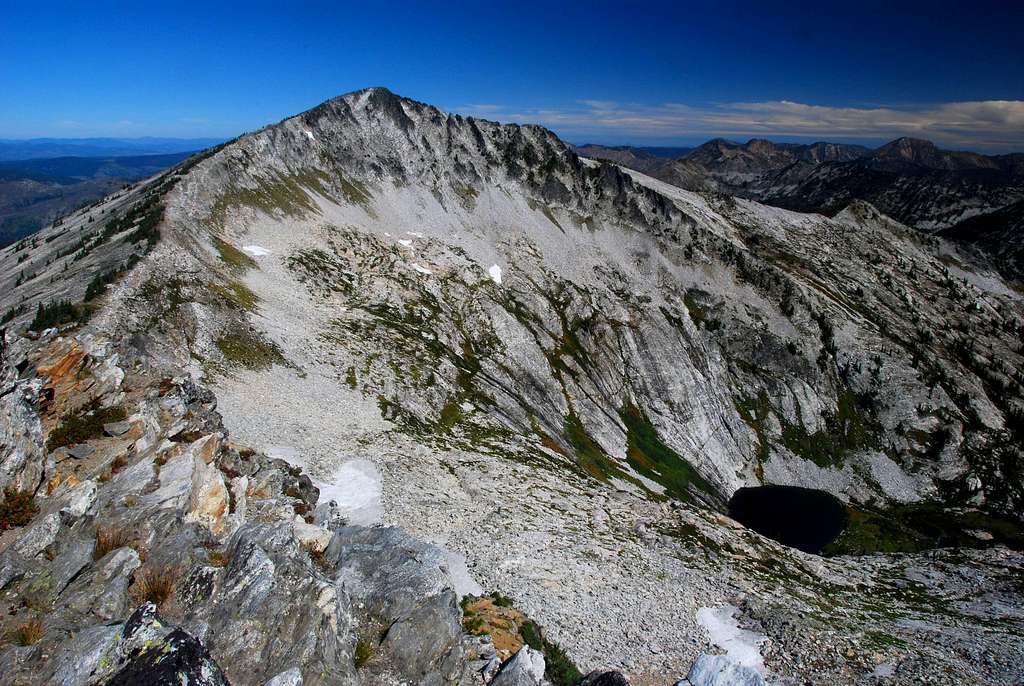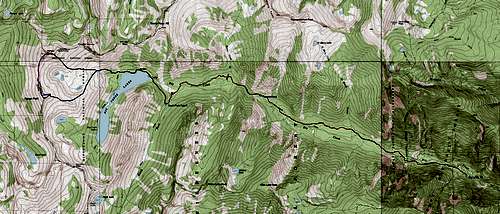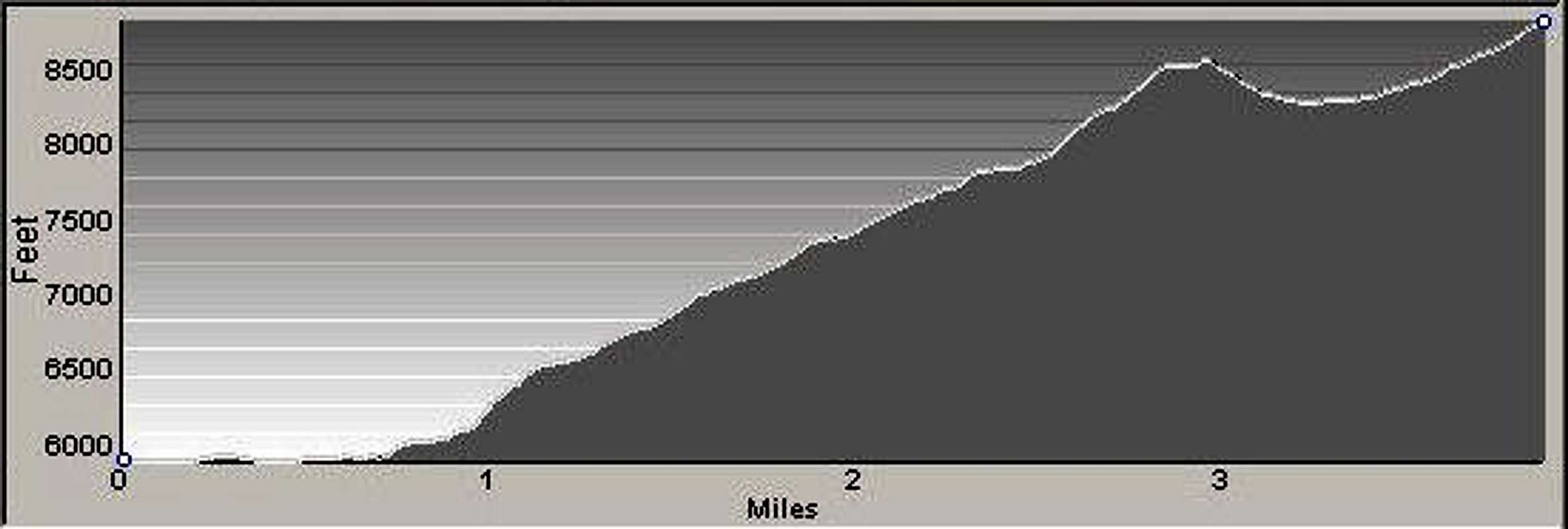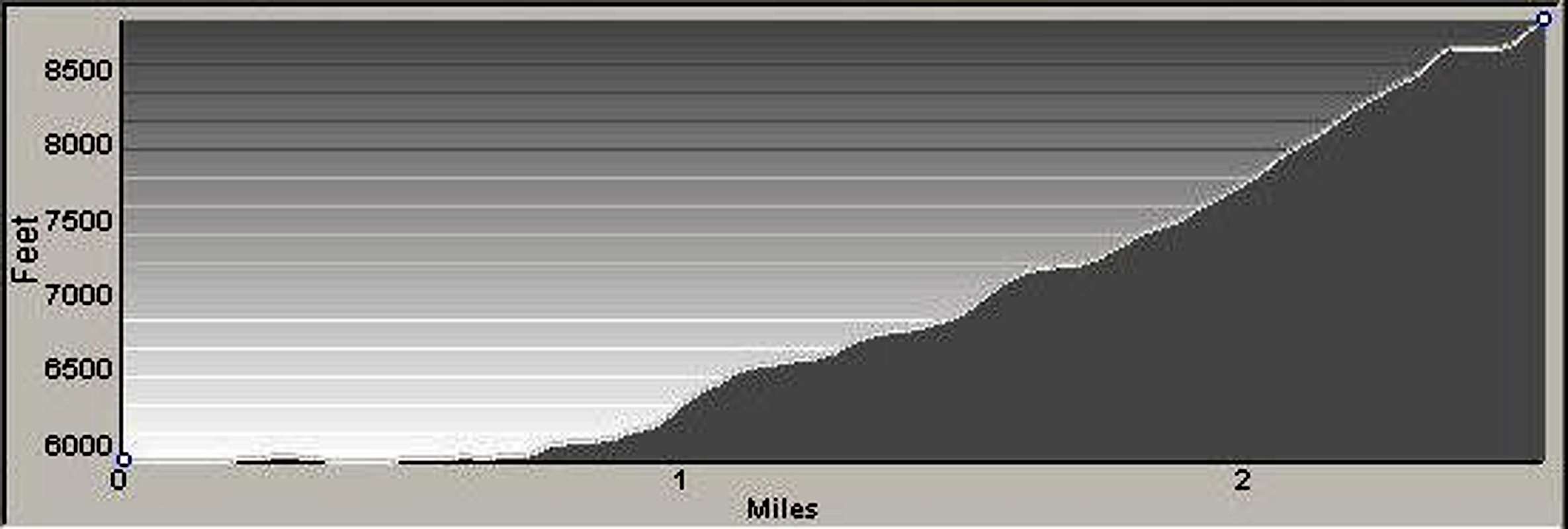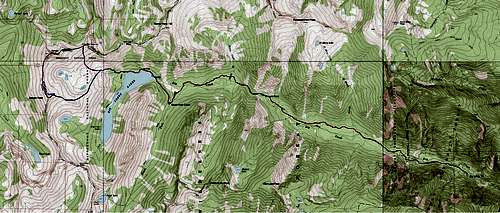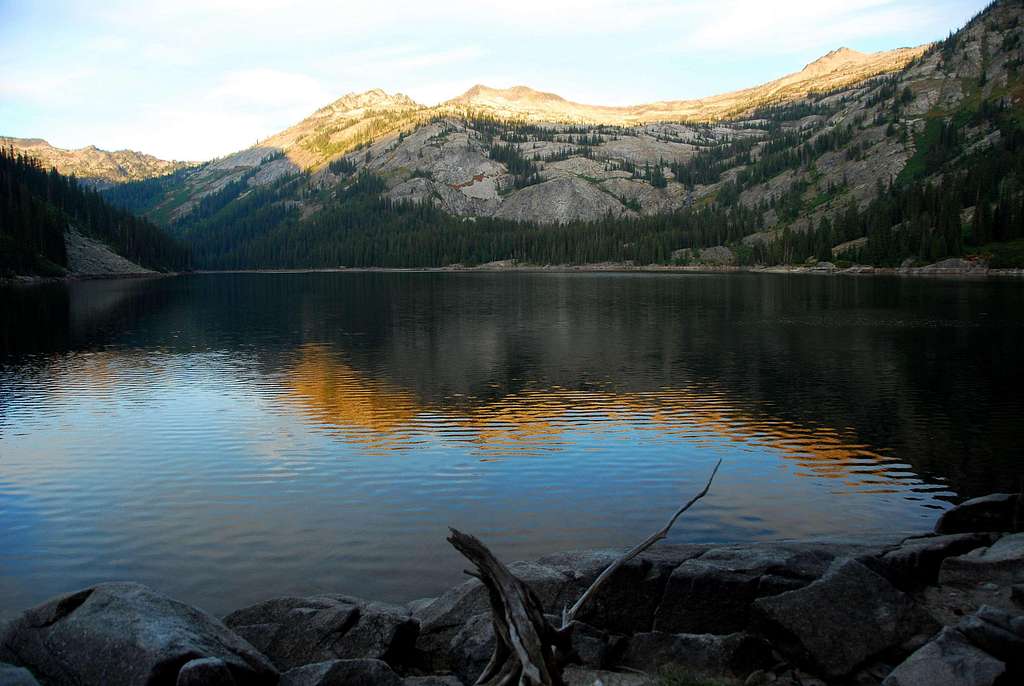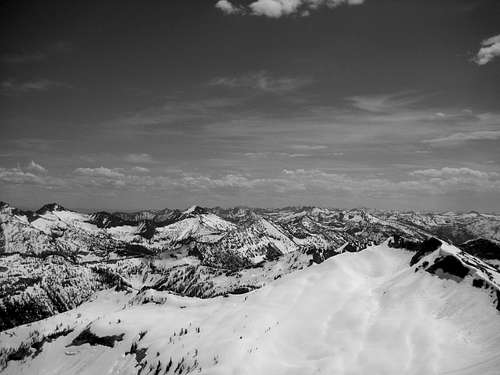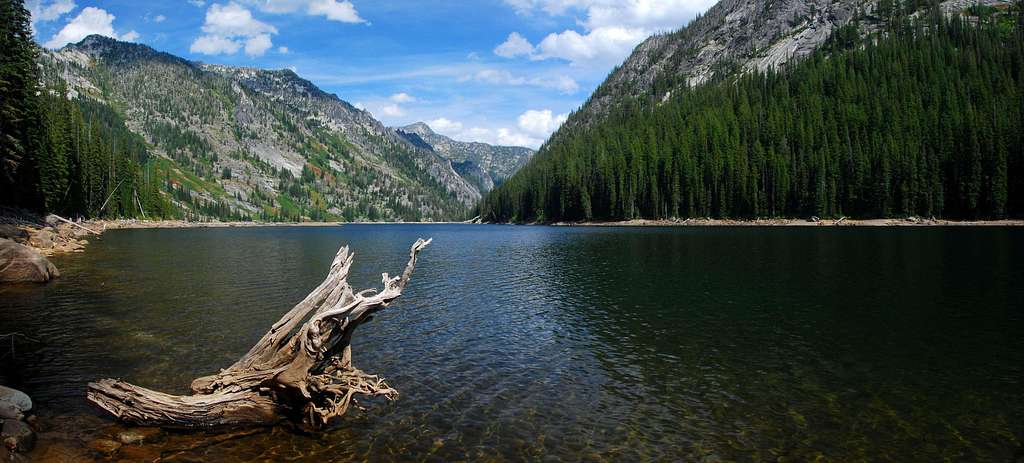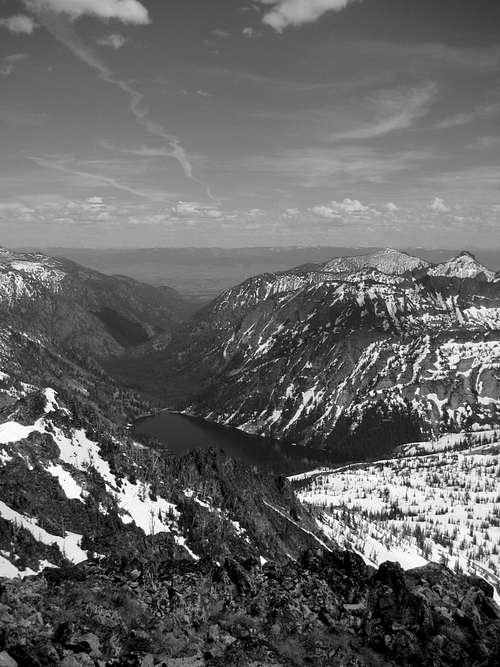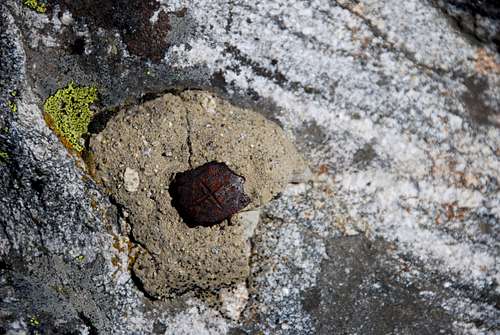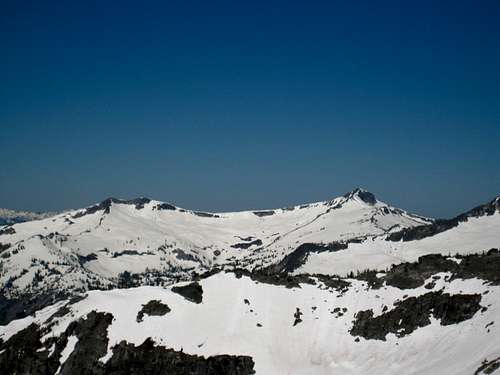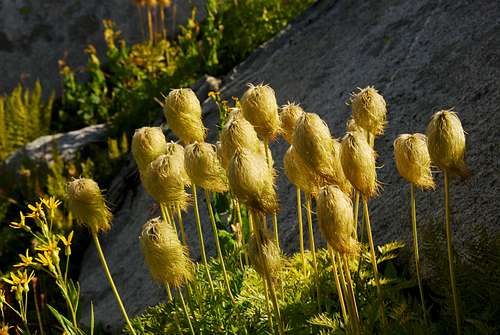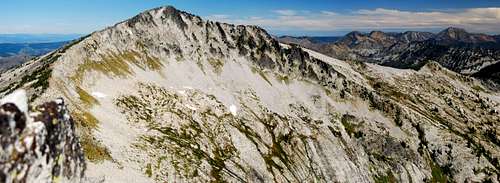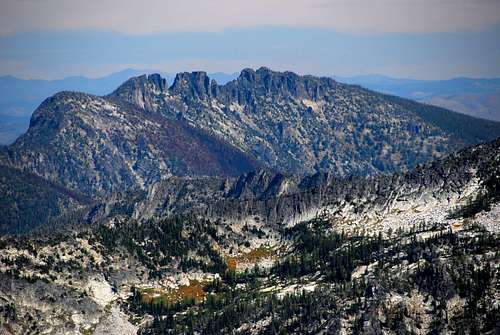-
 17435 Hits
17435 Hits
-
 85.87% Score
85.87% Score
-
 21 Votes
21 Votes
|
|
Mountain/Rock |
|---|---|
|
|
46.50232°N / 114.39897°W |
|
|
Ravalli |
|
|
Mountaineering, Scrambling |
|
|
Spring, Summer, Fall, Winter |
|
|
8817 ft / 2687 m |
|
|
OverviewThe Big Creek Lakes are not only a popular destination for backpackers but also for backcountry stock users. It’s quite a long way from the trailhead to the lakes, a fact which keeps most day-hikers and climbers from ever visiting the area. That is unfortunate because the area around the lakes and the surrounding peaks is some of the most picturesque in the Bitterroots. Few climbers venture as far as this cirque, but those who do come to ascend the most well known of its summits, Ranger Peak. The Big Creek Lakes are visited most often by long-distance backpackers, through hikers, and horsemen and horsewomen. At one time there were two passes into Idaho from this backcountry cirque. Unfortunately the trail over one of those passes – Stormy Pass to the north – has been abandoned. Why, I don’t know, but suspect it was because of unrealistic limitations placed on Forest Service funds by congress. The other, Packbox Pass to the south, still has an excellent trail, one which again received maintenance during the summer of 2009. This pass is still in use by those who tie some of Idaho‘s Wilderness trails together to trek from one canyon to another. Once called Snowy Peak, no doubt because of the huge quantities of the white stuff it receives during the winter months, this massive mountain’s current name is recognized by many who live in the Bitterroot Valley. In spite of the fact it is located far from the trailhead, Ranger Peak can be seen from certain places on the floor of the Bitterroot Valley, though most who have not visited its immediate locale don’t realize what they’re viewing, so far back the canyon just south of Saint Mary Peak. Situated on the rim of the Big Creek Cirque northwest of Big Creek Lakes, Ranger Peak provides some of the most spectacular views available in the Bitterroots and is well worth the effort required to ascend its summit.
Getting ThereFrom the Stevensville turnoff on Hwy 93, drive south for 5.5 miles to Big Creek Road. (This junction, with its flashing yellow light, is also known as Bell Crossing.) Turn right (west) onto the gravel Big Creek Road, then follow the signs to the Big Creek trailhead, approximately 4.5 miles from Hwy 93. Less than a half mile from Hwy 93, the road makes a couple of 90 degree turns (right then left – north then west) before continuing for another mile where it reaches FR 738. Proceed northwest on FR 738, then, at about three miles from Hwy 93, the road crosses the old Curlew Mine (open-pit) before continuing to a junction. At the junction, bear to the right (northwest) and follow the road a short distance to its end. The trailhead has an outhouse, several picnic tables, and lots of room for parking. Area Restrictions (Red tape)Just under 1.5 miles from the trailhead you pass into an official wilderness area, The Selway-Bitterroot. All wilderness rules and regulations apply.CampingThere is no camping at the trailhead for this route. However, there are some truly superb sites at Big Creek Lakes, both near the dam and along the western shore.There are also established campsites 5 miles in along the trail at "Teepee Rock." Although the trail-side sites are more than adequate, I highly recommend camping at the lakes. The RoutesSouth Ridge Route
Approach – Trailhead to a Camp Near the Dam on Big Creek Lakes Just over 5 miles from the trailhead, the trail passes Teepee Rock, a huge boulder on the right (north) side of the trail (46.48957 N / 114. 30458 W – elevation 4,890’). There are several campsites in this area. Over the next couple of miles the trail uses rustic log bridges to cross a mountain stream, Beaver Creek, and Big Creek. The track forks at the South Big Creek Trail (46.48683 N / 114.34842 W – elevation 5,500’), 7.9 miles from the trailhead. You may find it interesting that this pack trail leading south to South Fork Lake, was cleared during 2009 for the first time in ten years - gotta love those Stimulus Funds! Less than one mile after the trail junction, the track finally reaches the outlet of Big Creek Lakes. There are several nice campsites close to the dam end of the lakes; however, the best sites are farther down the west side of the lake near a small peninsula. But, because there is a small grassy meadow close by – perfect for grazing livestock – these camping spots are almost always occupied by stock users. South Ridge Climbers’ Route – Base Camp to the Summit Once on the summit of Ranger Point, it’s a simple matter to proceed north along the connecting ridge to Ranger Peak. As you proceed north along the ridge, move on and off the ridge-crest as required to avoid the small clumps of wind-swept trees guarding the crest at several points. You may find it simpler to stay just right (east) of the crest during much of the journey. In many places this portion of the ridge is free of plant growth. That’s because it is buried under snow for so much of the year little is able to grow. When you’ve almost reached the summit, at an elevation around 8,625’, there is an especially thick growth of trees on the ridge-crest. Traverse left (north) onto the talus strewn west face of the peak for the short distance required to bypass these trees, before climbing back toward the crest. Stay on the ridge-crest for the remaining few feet of climbing required to reach the summit area. In spite of the significance of this peak, it has one of the smallest survey markers I’ve yet to see on a summit – a railroad spike set in cement. Descend by reversing this route back over Ranger Point to the lake, down-climb the Class 4 east ridge into the cirque then to the lake, or better yet, follow the east ridge to Old Stormy before descending to the lake. East Ridge Route
East Ridge Climbers’ Route – Base Camp to the Summit Just where the trail turns to the south (46.49673 N / 114.36621 W – elevation 5,950’), go off-trail and bushwhack your way uphill through the foliage and over sections of slab-granite. There is no “perfect” way through this section of the route. Everyone has to pick a line and just “go for it.”: Eventually you will break out of the thick brush and foliage and enter an area of grass and groves of trees, somewhere around an elevation of 6,600’. You will also be in the neighborhood of the stream which drains this cirque. Keep hiking upward to the west. Do not follow the stream as it curves to the south and away from your desired destination. Around an elevation of 7,150’ you will enter a marshy area. Skirt it on its north (right) side and head toward the lower end of a ridge (7,500’ elevation) which rises toward Ranger’s summit from the southeast. Work your way up the ridge, staying mostly on its east (right) side as you switchback up on sections of animal (Mountain Goat) trails to the ridge-crest. Note: An different line to the crest of Ranger's east ridge is to aim more (right) toward the saddle between Ranger Peak and Old Stormy - longer but an easier ascent. Once on the crest of the east ridge, follow the crest westward through the Class 4 gendarmes to Ranger’s summit. Descend by reversing this route, down-climbing to Old Stormy before returning to the lake, or following Ranger’s south ridge to Ranger Point, then on to the lake. When To GoIt’s possible to visit this summit at any time of the year. But the best time is during the summer and fall. I especially like to go late in the season after the mosquitoes and other biting bugs have mostly disappeared.Essential GearOther than standard hiking gear, nothing special is required to reach this summit. However, it is much more enjoyable to camp near the Big Creek Lakes and make this a multi-day outing. In fact, your best bet is to include ascents of Ranger Point and Old Stormy and turn it into a three-day affair.Route StatisticsSouth Ridge RouteEast Ridge Route Ranger Peak Circuit - Includes Ranger Point and Old Stormy Additional Pictures |



